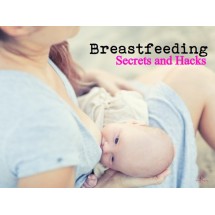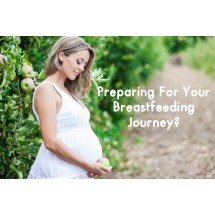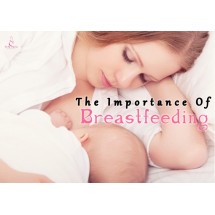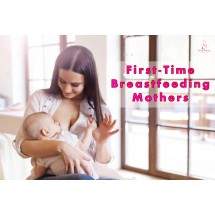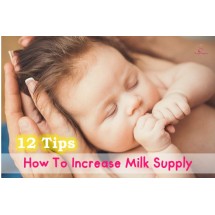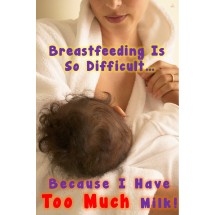
Breastfeeding is beneficial for both the mother and baby, and a natural process involving hormones, brain signals, sucking reflex and baby latching on. However, natural does not mean it is easy and much study and research is still ongoing to understand more about breast milk and the many facets of breastfeeding.
Yes, we know breastfeeding is good!
Nutrition-wise, breast milk has many benefits, regardless of how long one manages to breastfeed. For instance, even breastfeeding for the first few days of birth will give your baby the benefits of colostrum which contains antibodies and helps with digestion. Breast milk offers beyond the nutrition that a baby needs in the first six months, as breast milk strengthens the baby’s immune system, lowers risk of infection and diarrheal disease. The protection provided by breast milk extends beyond the first few years, for instance breast-fed babies are less likely to be obese, diabetic, develop cancer and have high blood pressure.
The World Health Organization (WHO) and the American Academy of Pediatrics (AAP) recommend exclusive breastfeeding for six months and continued breastfeeding with solid foods for 12-24 months, or for as long as the mother and baby desire. Parenting expert and author of ‘What to Expect when You’re Expecting’ had recommended that for “a six-month old, breast milk or formula milk is still the main source of nutrition and will continue to be for the most of the first year”.

Maintaining the milk supply
For working mothers in Singapore, the maternity leave is 16 weeks and unless extended leave is applied, mothers return to work when the baby is about 3 to 4 months old. If breast milk is not being expressed for a short period of time, there is the possibility that the milk supply will drop. Reason is because, the mother’s body did not get the ‘signal’ that there is a continual demand for breast milk.
Breastfeeding is controlled by hormones and one of which is prolactin that stimulates milk production. Every time the baby nurses, a signal is sent to the brain to trigger more prolactin release. If a mother ceases to feed for more than a few days, the prolactin hormone may drop so low that breast milk production is affected. The best way to maintain milk supply is to continue to breastfeed, generally recommended to be on-demand especially for the first few months. Dr Bill Sears, America’s renowned pediatrician and author of over forty books, had said in a talk that “on-demand feeding is increasingly recommended versus feeding babies on four-hour schedule, which had been associated with a failure to thrive”. For working mothers, expressing milk at work is a way to maintain milk supply.
Heidi Murkoff had also reminded parents in a talk that to “make sure each breast gets drained before you move on to the next. That way you’ll be sure your baby’s getting both the foremilk (the thirst quencher, which is thinner) and the hindmilk, which is creamier, full of more fat and calories and which helps a baby feel full and satisfied.” Mothers also have to get enough rest, good nutrition and drink enough fluids to maintain milk supply. Stress, illness, smoking, birth control and certain medication may temporarily decrease milk supply. If there is reduced milk supply, it is generally advised to seek a lactation consultation soon as prolonged milk reduction may not be reversible.

Mothers often faced obstacles to continual breastfeeding
Going back to work is a common obstacle to mother’s efforts to continue breastfeeding. Even if expressing milk at workplace is feasible, a working mother who has just given birth may feel too tired, stressed with juggling work and baby to continue breastfeeding. Spouse support and encouragement is observed to be an important factor to continual breastfeeding – dads can play a role too, from night-feeding expressed milk, doing housework to cooking nutritious meal so that the mother can rest and focus on breastfeeding.
Medical conditions that developed after starting breastfeeding will also affect the mother’s ability to perservere on. Common conditions include breast infection, abscess, breast engorgement and sore and crack nipples. Time commitment is another obstacle for new mothers. Each family’s situation is unique and at times, the time required to breastfeed or express breastmilk may overwhelm a mother.
How long should we breastfeed our baby and when should weaning start?
The AAP recommends starting solids at about six month old, with continued breastmilk given to the baby. There are various signs to observe whether a baby is ready for starting solids, such as ability to sit up, hold the head up, grasp objects and move foods in the mouth. Starting solids should be seen as more of a discovery process of new tastes and textures, rather than trying to get a complete nutrition from solids foods. However, starting solids is important to meet the baby’s changing nutritional needs, in particular an increased need for iron. Delay in starting solids has also been observed to affect the baby’s oral motor function and linked to an aversion to solid foods.
For mothers who are able to continue breastfeeding, it is a personal decision on how long to continue. Mothers should not be criticised or judged whether she chooses to stop breastfeeding early or continue for a longer time.
If you are on the stage of weaning your baby, find out how you can stop breastfeeding.
Written by Mei

